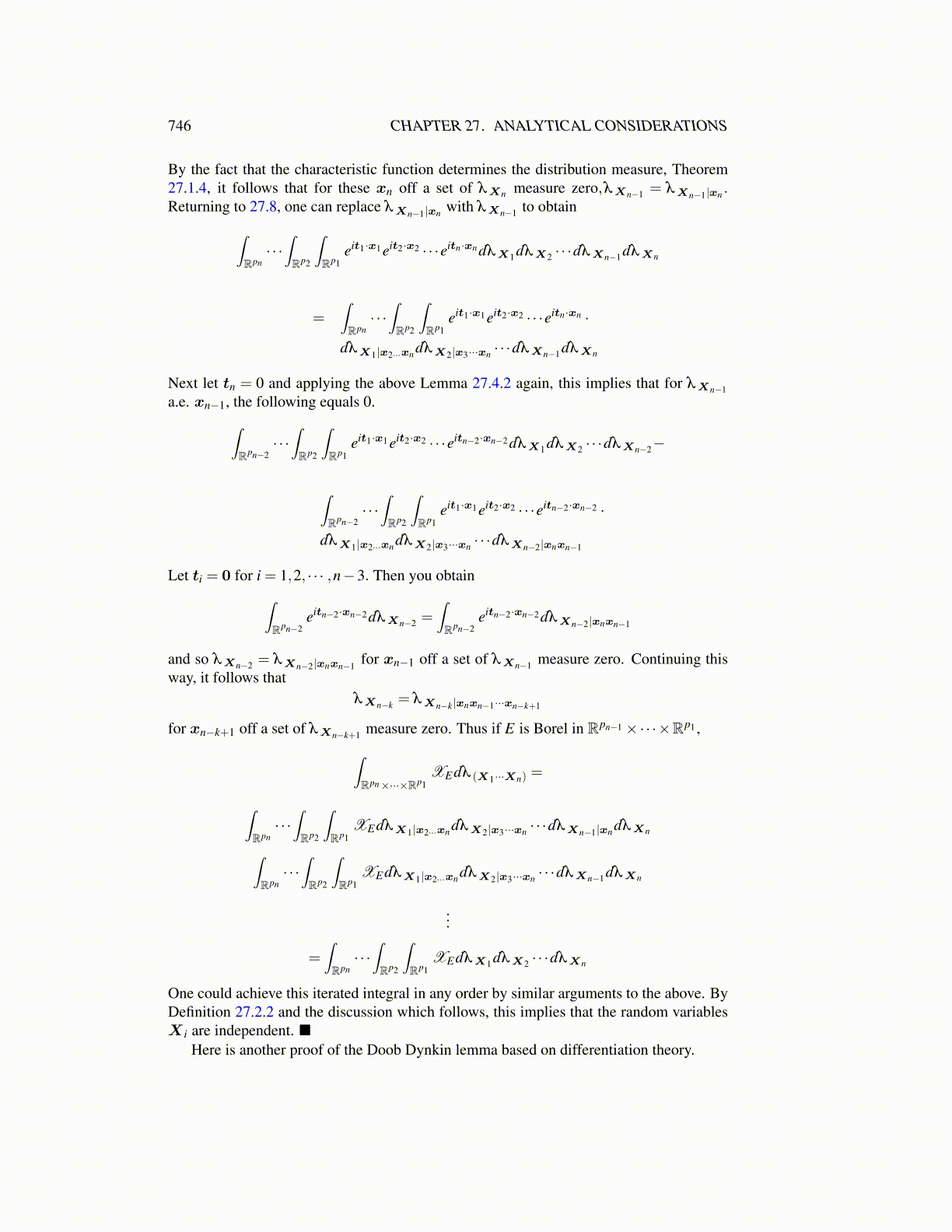
746 CHAPTER 27. ANALYTICAL CONSIDERATIONS
By the fact that the characteristic function determines the distribution measure, Theorem27.1.4, it follows that for these xn off a set of λXn measure zero,λXn−1 = λXn−1|xn .Returning to 27.8, one can replace λXn−1|xn with λXn−1 to obtain∫
Rpn· · ·∫Rp2
∫Rp1
eit1·x1eit2·x2 · · ·eitn·xndλX1dλX2 · · ·dλXn−1dλXn
=∫Rpn· · ·∫Rp2
∫Rp1
eit1·x1 eit2·x2 · · ·eitn·xn ·
dλX1|x2···xndλX2|x3···xn · · ·dλXn−1dλXn
Next let tn = 0 and applying the above Lemma 27.4.2 again, this implies that for λXn−1a.e. xn−1, the following equals 0.∫
Rpn−2· · ·∫Rp2
∫Rp1
eit1·x1eit2·x2 · · ·eitn−2·xn−2dλX1dλX2 · · ·dλXn−2−
∫Rpn−2
· · ·∫Rp2
∫Rp1
eit1·x1eit2·x2 · · ·eitn−2·xn−2 ·
dλX1|x2···xndλX2|x3···xn · · ·dλXn−2|xnxn−1
Let ti = 0 for i = 1,2, · · · ,n−3. Then you obtain∫Rpn−2
eitn−2·xn−2dλXn−2 =∫Rpn−2
eitn−2·xn−2dλXn−2|xnxn−1
and so λXn−2 = λXn−2|xnxn−1 for xn−1 off a set of λXn−1 measure zero. Continuing thisway, it follows that
λXn−k = λXn−k|xnxn−1···xn−k+1
for xn−k+1 off a set of λXn−k+1 measure zero. Thus if E is Borel in Rpn−1 ×·· ·×Rp1 ,∫Rpn×···×Rp1
XEdλ (X1···Xn) =
∫Rpn· · ·∫Rp2
∫Rp1
XEdλX1|x2···xndλX2|x3···xn · · ·dλXn−1|xndλXn∫Rpn· · ·∫Rp2
∫Rp1
XEdλX1|x2···xndλX2|x3···xn · · ·dλXn−1dλXn
...
=∫Rpn· · ·∫Rp2
∫Rp1
XEdλX1dλX2 · · ·dλXn
One could achieve this iterated integral in any order by similar arguments to the above. ByDefinition 27.2.2 and the discussion which follows, this implies that the random variablesX i are independent. ■
Here is another proof of the Doob Dynkin lemma based on differentiation theory.